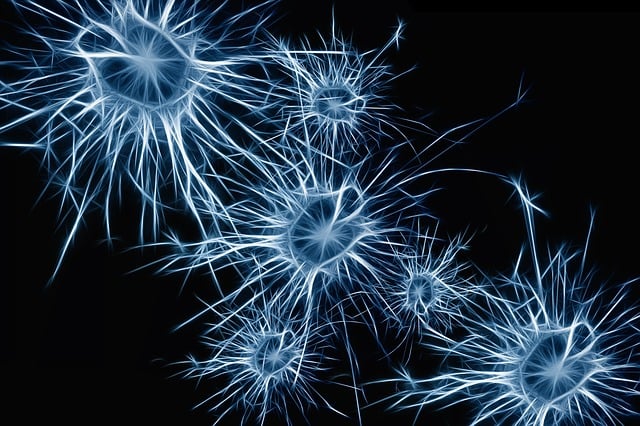Advanced brain imaging techniques, including MRI and CT scans, are essential for diagnosing and managing epilepsy by revealing brain abnormalities like tumors or structural changes. Brain tumor imaging is a critical step in detecting, differentiating, and treating brain tumors linked to epilepsy, ultimately enhancing treatment effectiveness and patient outcomes.
“Unveiling the mysteries of epilepsy through the lens of advanced brain scans and imaging techniques is a game-changer in neurology. This article explores how brain imaging plays a pivotal role in diagnosing and treating this complex condition, offering hope for improved patient outcomes. From uncovering subtle abnormalities to identifying brain tumors, advanced imaging provides invaluable insights.
We delve into the world of epilepsy diagnosis, highlighting the accuracy and precision of modern techniques like MRI and CT scans. Additionally, we focus on the critical aspect of brain tumor imaging, a crucial step in treatment planning.”
Unveiling Epilepsy: The Power of Brain Scans
Epilepsy, a complex neurological disorder, often presents challenges in diagnosis and treatment. Here’s where advanced brain imaging techniques step in as powerful tools. By delving into the intricate structures of the brain, these scans offer invaluable insights into epileptic activity, helping neurologists unravel the condition’s mysteries.
Through various imaging methods, including magnetic resonance imaging (MRI) and computed tomography (CT), healthcare professionals can detect abnormalities such as brain tumors or structural changes that may be contributing factors to seizures. Brain tumor imaging plays a crucial role in identifying these issues, enabling early intervention and tailored treatment plans. This technology provides a glimpse into the brain’s inner workings, ultimately leading to more effective epilepsy management.
Advanced Imaging Techniques for Accurate Diagnosis
Advanced imaging techniques play a pivotal role in the accurate diagnosis and management of epilepsy. Technologies such as magnetic resonance imaging (MRI) provide detailed, high-resolution views of the brain’s structure and function, enabling neurologists to identify abnormalities associated with epileptic activity. Computerized tomography (CT) scans, another powerful tool, offer rapid cross-sectional images, aiding in the detection of structural changes or lesions that could be causing seizures.
Furthermore, advanced brain tumor imaging techniques like positron emission tomography (PET) and functional MRI (fMRI) offer insights into metabolic and blood flow patterns within the brain, helping to pinpoint seizure foci and assess the impact of treatment. These sophisticated methods contribute significantly to personalized epilepsy care, ensuring more precise diagnoses and tailored therapeutic interventions.
Visualizing Brain Tumors: A Critical Step in Treatment
Accurate visualization is a critical step in diagnosing and treating brain tumors, which are often associated with epilepsy. Advanced imaging techniques play a pivotal role in this process by providing detailed insights into the brain’s intricate structure and potential abnormalities. Through high-resolution scans, medical professionals can identify tumors, assess their size and location, and determine their impact on surrounding neural networks.
Brain tumor imaging involves various methods such as magnetic resonance imaging (MRI), computed tomography (CT) scans, and positron emission tomography (PET). These technologies enable doctors to differentiate between benign and malignant growths, plan targeted treatments, and predict patient outcomes. Early and precise detection through brain tumor imaging significantly enhances the effectiveness of treatment strategies, ultimately improving patient care and quality of life.
Enhancing Care: Interpreting Imaging Results in Epilepsy
In epilepsy diagnosis, brain tumor imaging plays a pivotal role. Advanced imaging techniques like magnetic resonance imaging (MRI) and computed tomography (CT) scans provide detailed insights into the brain’s structure and potential abnormalities. These technologies help neurologists detect subtle changes, such as small tumors or areas of tissue damage, which might be indicators of epilepsy-causing conditions. By interpreting these imaging results accurately, healthcare professionals can enhance care significantly.
Accurate interpretation allows for personalized treatment approaches. If a brain tumor is identified, for example, precise localization aids in determining the best course of action, whether it’s surgery, radiation therapy, or medication. This detailed understanding not only improves diagnostic accuracy but also enables doctors to predict outcomes and tailor treatments, ultimately leading to better patient outcomes and improved quality of life.
Imaging plays a pivotal role in both diagnosing and treating epilepsy, offering crucial insights into brain activity and structural abnormalities. Advanced techniques like MRI and CT scans enable accurate identification of seizures’ origins, from subtle changes in brain wiring to visible tumors. This not only aids in precise diagnosis but also guides personalized treatment plans, including targeted medication and, when necessary, surgical interventions for conditions such as brain tumor imaging. By interpreting these imaging results, healthcare professionals can significantly enhance epilepsy care, improving quality of life for patients.
